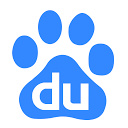AI Q&A Mechanisms and Optimization Strategies
The function builds a semantic understanding engine based on the content of the knowledge base, and its workflow is divided into three stages:
- Intent recognition: Parsing the real needs of user questions through NLP techniques (e.g., "configure server" may be related to installation manuals or troubleshooting).
- knowledge retrieval: Finding the most semantically relevant passages in a vectorized stored document
- Answer Generation: Convert raw technical documentation into natural language responses
Core considerations for use include:
- Content quality dependency: AI answer accuracy is directly affected by the completeness and professionalism of the knowledge base documentation, and it is recommended that the technical documentation be updated on a regular basis.
- Feedback optimization mechanism: When an inaccurate answer is found, the source document should be synchronized and corrected rather than simply changing the answer
- Multi-Wheel Interaction Design: Complex questions are recommended to be split into multiple sub-questions to get more precise answers.
This answer comes from the articlePandaWiki: rapidly building an AI-powered knowledge base systemThe




















